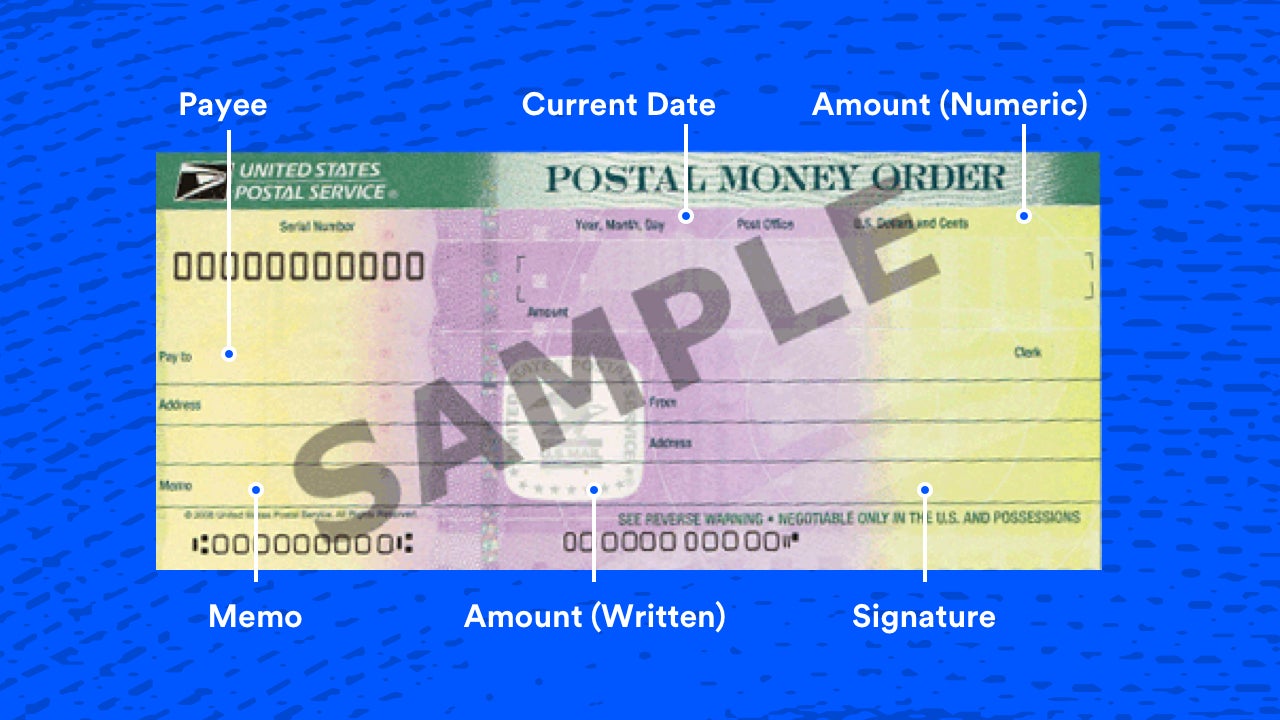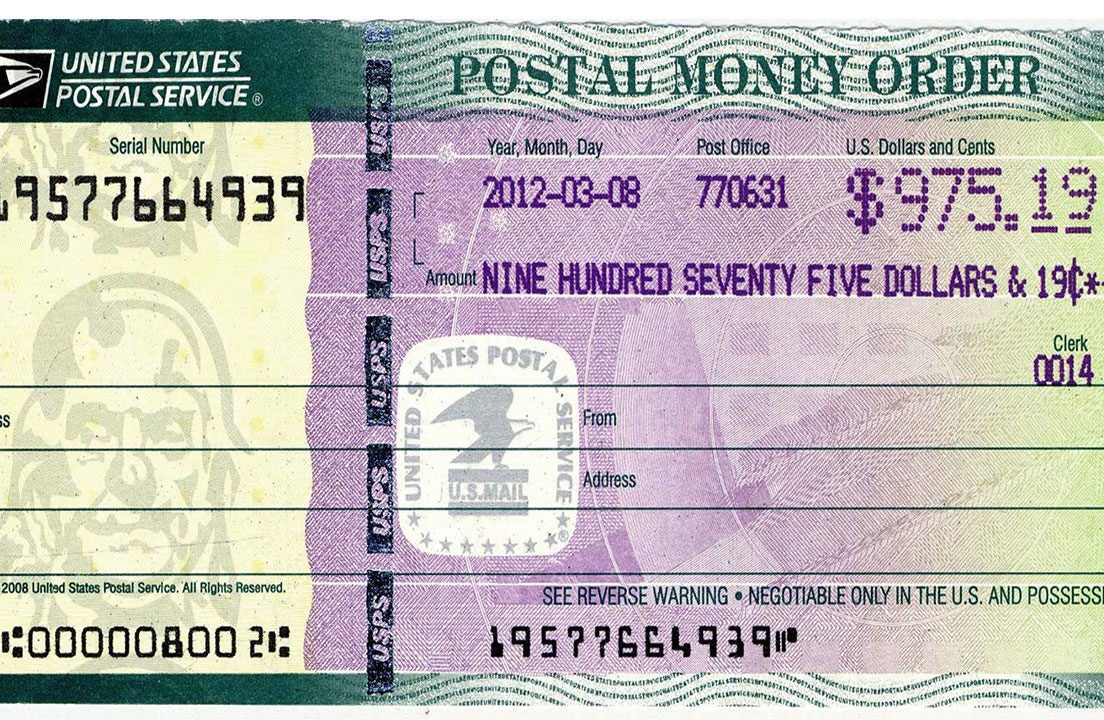How to Write Money Order. It’s quite easy if you follow some simple rules,which can be found here. And once you check out how to write money order, you should know more details on Filling Out Postal Money Order Form. Basically, money orders are an excellent choice for people who don’t have any credit cards at their disposal and who do not want to rely on debit or cash cards.
Money order is money that is sent through the mail. It is very popular with small businesses, rent payments, and even employee payroll. They are often called postal money orders because they are purchased at post offices. Money orders are very important form of payment for rent payment, business purchases etc. There are various types of money orders like cashier
A money order is a piece of paper that acts like a guaranteed check. A money order can be purchased at banks and grocery stores, as well as several other types of stores. Ask at the front desk if the store you are in sells money orders. Most money orders cost between 50 cents and $4. A money order is machine-stamped with the amount of money the money order was purchased for. For example: If you purchase a money order for $50, the establishment where you purchased your money order, will print $50 in the amount field. You will pay the establishment $50 plus the cost of the money order.
Filling out a money order is a fairly straightforward process, but it’s important to get it right. When filled out properly, these paper documents allow you to securely send or receive payments, providing an alternative to cash, checks or credit cards. Western Union says you should “think of a money order as a pre-paid check.”
Here’s what you need to know in order to purchase and fill out a money order correctly.

Table of Contents
What you need to fill out a money order
The requirements to fill out a money order vary by institution, whether its Western Union or the United States Postal Service. Each institution’s money order may differ slightly in appearance as well. However, you’ll generally need the following information:
- Name of payee (i.e. the person to whom the money will be paid)
- Payee’s address
- Payment amount
- Your name and address
- What the payment is for and/or the billing account number
You’ll also need a form of payment to purchase the money order (cash, check, debit card). Some issuers limit your payment options, too. For example, you likely won’t be able to purchase a money order with a credit card.
How to Write Money Order
Part 1: Filling Out the Basic Parts of a Money Order
- Start by buying a money order for the desired amount. Make sure the amount you paid and the amount printed on the money order are the same.
- You can purchase a money order from the Post Office. These are generally very affordable and easy to fill out.
- USPS money orders can be used for amounts up to $1000.00.
- Other places you can get a money order are banks, check cashing businesses, and Western Union locations (including many supermarkets).
- Many credit card companies will charge extra fees on purchases of money orders. Pay with cash or debit card to avoid those fees.
- Fill in the “Pay to the Order Of” line immediately. This is where you write the name of the person or business the Money Order is going to. [3]
- Write the name of the person or business legibly.
- Use blue or black ink pen to fill out the form.
- Make sure you have the correct spelling of the person or business.
- Fill in your name. There should be a “From,” “Purchaser,” “Sender,” or “Remitter,” field. [4]
- Use your full legal name or the name you use on the account you are paying on.
- As with the “Pay to the Order Of” line, use blue or black ink.
- Write your name legibly.
- Sign the front of the money order. On the front of some money orders, there will be a field labeled “Purchaser, Signer for Drawer,” “Purchaser’s signature,” or “Signature.” [5] Sign on this line using your full signature.
- Leave the endorsement signature blank. Do not sign on the line on the back of the money order. The signature line on the back of the money order is for the other person or company to endorse it before cashing.Advertisement
Part 2: Completing the Money Order
- Fill in the address fields. Some money orders may only have a section for the purchaser’s address.[6]
- Where it says “Purchaser’s address”, write in your address.
- Make sure you use your current mailing address.
- If there is a second address field, include the address of the person or company to whom you are sending the money order.
- Fill in the memo line. The person or company will want to know why you are sending a money order. [7]
- If you are sending your receipt for a payment of a bill, write the bill due date and your account number on this line.
- If the money order is to someone you know, indicate the reason on the memo line such as “Birthday Gift” or “Debt Payment”.
- Use this line to fill in any other information you need the person to know.
- Keep your receipt. Either your money order will have a carbon copy underneath or a portion attached to detach and keep for your records. [8] [9]
- If your money order gets lost or the recipient denies receiving it, the receipt can help you troubleshoot these problems.
- This receipt should have a tracking number to check on the status should problems arise.
- Without the receipt or tracking number you may be unable to verify the money order was received or to obtain a refund if it is lost.
How to purchase a money order
You can buy a money order at banks and credit unions, check-cashing businesses, the U.S. Postal Service, many grocery stores and some big-box stores. You can use cash or a debit card to buy the money order.
However, you may want to avoid using your credit card to purchase a money order, as your credit card company may consider the purchase a cash advance. Cash advances may trigger steep fees, and you may be hit with a higher-than-normal interest rate until you pay off the balance. Some issuers won’t accept credit cards as payment either.
There may be limits on the size of the money order you can purchase. The USPS, for example, allows you to buy money orders up to $1,000 if you’re sending it within the U.S. On top of the price of the money order, you will typically have to pay a fee of between $1 and $10.
Conclusion
Knowing how to write money order is important if you want to fill out postal money order. If your business involves working with the public or financial transactions, you should understand how it works and be familiar with the proper order form.
